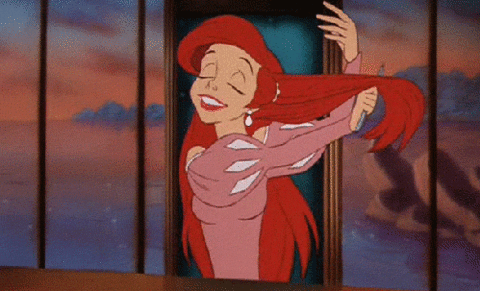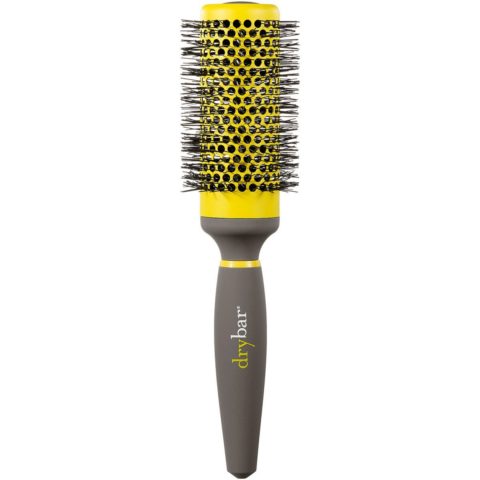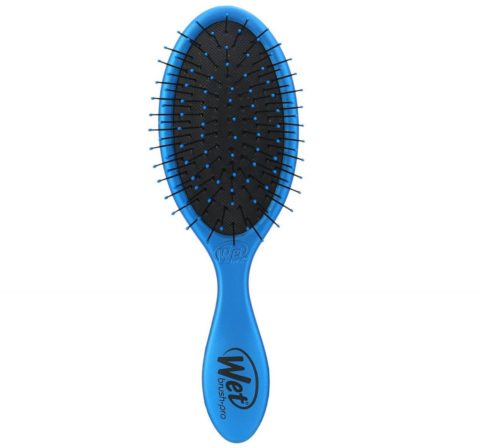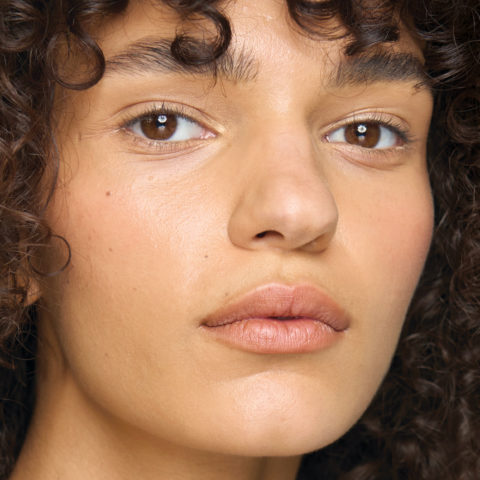The Ultimate Hairbrush Guide: Which One is Best for Your Hair Type?

You may think that brushing your hair seems like a no-brainer, but all of the shapes and sizes on display in the hairbrush aisle at your favourite beauty store each serve a purpose for specific hair types and styles. While it might be easy to grab whatever brush is on sale the next time you’re in need of a new replacement, if you’re experiencing stressed-out strands, your hairbrush may be the main culprit.
Nina Farrauto, hair and makeup artist at Batiste/Plutino Group stresses the importance of using the right brush, “Different styles of hairbrushes are better suited to different hair types, and the selection will affect the finish on the hair, manageability, as well as the health of the hair. Certain brushes could make some hair types fluffy, or silkier. They could get through the hair smoothly, or they might not penetrate the surface layers of your locks.”
Quality is also an important factor when choosing a brush, but a bigger price tag doesn’t always guarantee amazing hair. “Well-built professional quality brushes will run between $10-30 dollars each, and as long as you are choosing the right style and material for your needs, you should only need up to three or four brushes for personal use,” explains Farrauto.
Once the purchase is made, upkeep is just as crucial. Brushes not only detangle and style strands, but also remove skin from your scalp, dust, and environmental debris from your hair, and transfers oil from the scalp to hair ends. Farrauto suggests removing excess hair daily or weekly depending on your brushing habits, in addition to a monthly deep clean using a clarifying shampoo to break down product and oil remnants on your brush, and laying it facedown on a towel to dry.
So, how do you know what brush is right for your hair needs? We broke down the most widely used brushes and the types of tasks and hair they are best suited for.
1. Rat Tail Comb
A rat tail comb is the ideal tool to use when fine-tuning a hairstyle and working with small sections of hair. Whether you want a center, side or zig-zag part, this comb’s narrow teeth makes it great for creating sharp parts and sections. It also does wonders for backcombing and teasing hair to create volume, and adjusting the shape of a ponytail or updo from within the hair without ruining it. The best part: Every hair type can utilize this brush.
Scalpmaster Nano Rat Tail Comb ($7, amazon.ca)
2. Paddle Brush
Tangles have met their match when using this tool on wet thick hair or wet curls. For dry hair, a paddle brush is excellent for giving thick, full strands or ironed curls a refresh mid-day.
When to steer clear: dry, natural curls and fine hair may experience extra pulling from using this tool, as well as breakage.
Aveda Wooden Paddle Brush ($32, aveda.ca)
3. Boar Bristle Round Brush
If you have naturally curly hair, consider this brush your BFF for frizz-free style when blow-drying your hair. A round brush with boar bristles keeps curls smooth by grabbing a tight hold onto hair during a blowout to smooth its cuticles and eliminate fuzziness.
Goody So Smooth Boar 43mm Ceramic Round Brush ($13, walmart.ca)
4. Metal Bristle Vented Round Brush
The barrel design of a vented round brush creates volume and shape during blow-drying on all hair types. Styling is completed quickly due to the metal bristles heating up, combined with the air flowing through the brush’s vents, reaching a temperature that’s almost as hot as a curling iron.
When using this brush, it’s optimal to utilize it as a finishing tool once hair is about 90% dry. When hair is wet, it stretches, so using this brush on sopping wet tresses can cause unnecessary breakage and damage.
Drybar Full Pint Medium Round Brush ($50, sephora.com)
5. Vented Brush
A vented brush is great for thick, full hair thanks to its wide-toothed bristles. The air flow through its vents makes it the perfect choice for speed drying thick hair and achieving static-free straight blowouts.
Studio Dry Vent Hair Brush in Pink ($8, well.ca)
6. Boar Bristle Brush
Using a boar bristle brush is a gentle way to polish long, processed or fragile strands. It’s ideal for long hair because you can slowly work out any tangles starting from the top and making your way to the bottom. In addition, it’s a non-damaging method to create the illusion of fuller tresses if you have fine hair because it makes it fluffy.
If you have curls, a mixed nylon and boar bristle brush like Mason Pearson’s (basically the Rolls Royse of hair brushes), will smooth out natural curls instead of making them fluffy, unlike using a brush made from 100% boar bristles.
Mason Pearson ‘Handy Mixture’ Nylon & Boar Bristle Hair Brush ($206, shop.nordstrom.com)
7. Wide-Tooth Comb
If you find your hair tangled from washing it, this brush is for you. Stash a wide tooth comb in the shower to detangle wet hair and use it while conditioner is in your hair to help distribute the product, and once it’s rinsed out. To avoid knots, comb small sections starting at the bottom of your hair and work your way up.
Sephora Collection Tidy: Detangling Comb ($10, sephora.com)
8. Synthetic Bristle Brush
This is an amazing tool for a few reasons: it’s effective in detangling thick hair after getting out of the shower, and touching up your style throughout the day.
Although, practice caution if you have thin hair. Synthetic bristles can pull and snag thin or fragile tresses, so use gently if this is your hair type.
Wet Brush Blue Detangling Brush ($16, amazon.ca)











